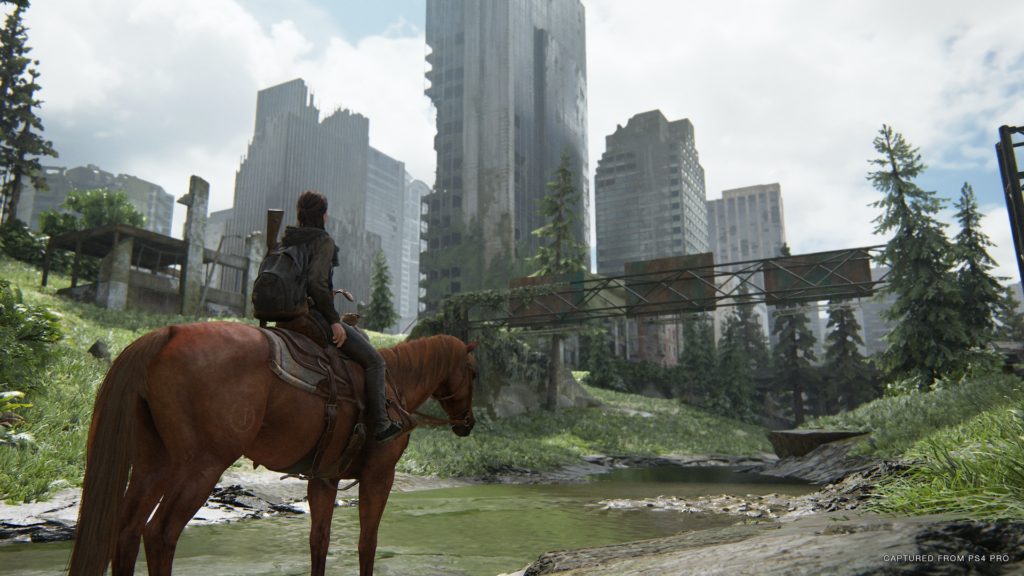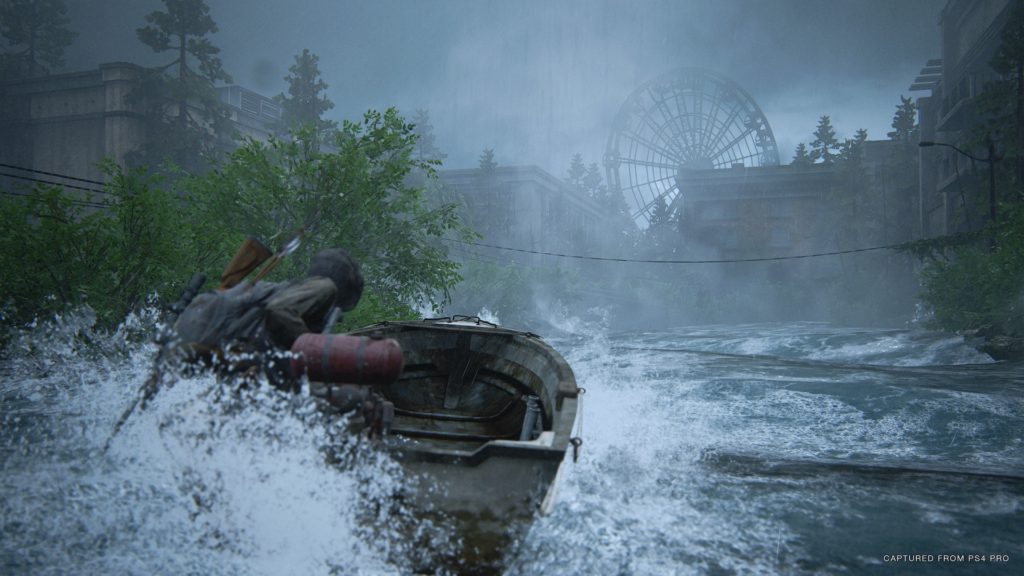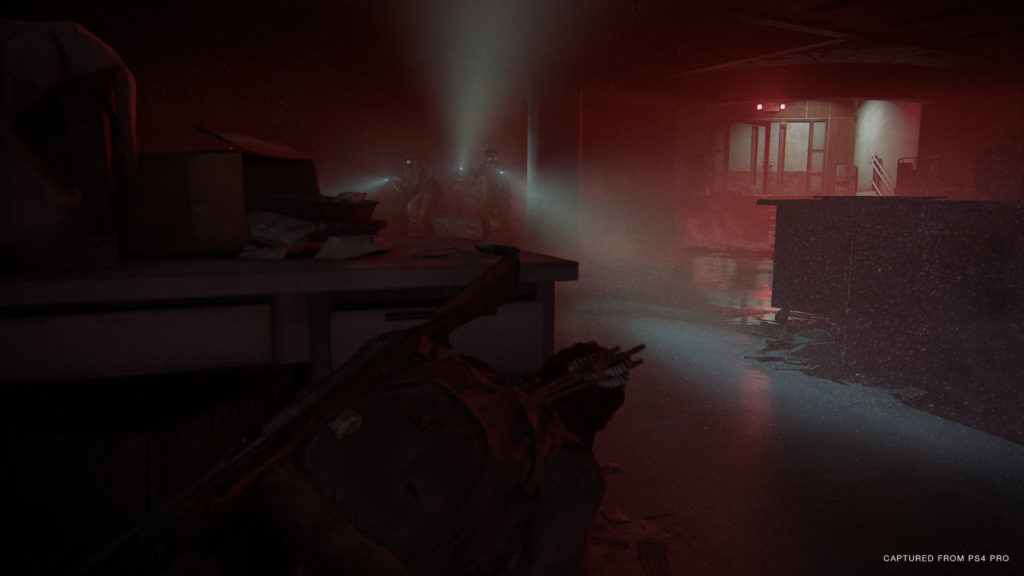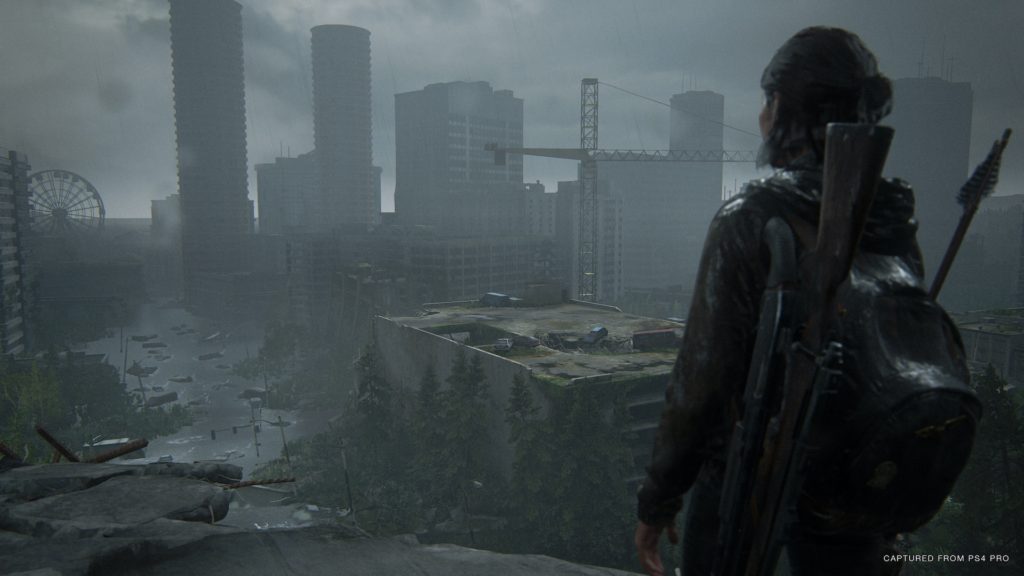
Way back in 2013, with just months to go before the launch of the PlayStation 4, Naughty Dog released The Last of Us on the PlayStation 3. Despite their own work on the likes of Uncharted 2, and despite the immense leaps that graphics took in that generation, with games like Metro: Last Light on PC pushing the DirectX feature set we’d come to see in the eighth-gen, The Last of Us was a stunner.
Despite running on hardware dating back to 2006, the Last of Us seemed to put a cap on the entire PlayStation vs Xbox 360 graphics debate that’d stretched on throughout the seventh generation. It was an unprecedentedly gorgeous console title and it gave us a glimpse of what was possible in the eighth gen. Indeed, when the Last of Us Remastered cropped up on PlayStation 4, it was remarkable to see just how well the PlayStation 3 swan song held up compared with early eighth-gen AAA titles, with just a bump to resolution and frame rate. It was also a demonstration of Naughty Dog’s skill as PlayStation developers par excellence.
Now, seven years and an entire console generation later, it appears as though history is about to repeat itself. At the very end of the eighth generation, with the PlayStation 5 and Xbox Series X just months away, Naughty Dog released a sequel to its PS3 send-off: The Last of Us Part 2 on the PlayStation 4 and PlayStation 4 Pro. We will undoubtedly see the Last of Us Part 2 land on PlayStation 5, either through backwards compatibility or a remaster of its own. However, in the meantime, the base PlayStation 4 and enhanced PS4 Pro code look absolutely stunning and arguably offers us a taste of what ninth-gen visuals will look like, a few months before the ninth-gen consoles hit the market.
The Last of Us 2 has received an overwhelmingly positive critical response – this is simply an excellent game all in all. However, right now, we’re going to be looking at the technology behind the game, how Naughty Dog leveraged seven years of experience with PlayStation 4 hardware to craft one of those precious few games where we don’t have to suspend our belief quite as hard. The Last of Us 2 is a technological masterpiece. Let’s take a deep dive and find out what makes it tick.
Engine overview
The Last of Us 2 is built on Naughty Dog’s internal engine, meaning that it builds on the technology powering Uncharted: Lost Legacy, and, of course, the first Last of Us on PlayStation 3. Nevertheless, there have been substantial improvements under the hood. The Last of Us 2’s engine uses a deferred renderer. This is part of what makes the games remarkable lighting a possibility: the deferred approach lets Naughty Dog add in multiple dynamic light sources. In a game environment like the Last of Us 2’s, where electricity and artificial lights aren’t exactly commonplace, the sun, and the limited number of in-scene light sources (fires, candles, and more) can play a big role in atmospherics. The interplay of light and shadow here, and the interface of the sun lighting with other light sources creates scenes with immense contrast.
As mentioned, the Last of Us 2 engine is an iterative update over earlier Naughty Dog titles. What does this mean, though, when comparing the Last of Us 2 to the older PlayStation 3 game?
Uncharted debuted the deferred rendering lighting system that Naughty Dog has been using ever since. In The Last of Us 2, relative to the original game, we see an increase in the number of light sources onscreen, the range at which light sources cast dynamic light, and a greater fidelity to the nature of light interaction, thanks to an overhauled material rendering pipeline and enhanced indirect lighting.
The Physically based material rendering system is the most significant improvement over The Last of Us 1 on PlayStation 3. The use of PBR materials allows the lighting to really shine, with surfaces like corroded metal and wood photorealistic at medium distances. The world design is, of course, more open ended, and texture assets are authored with 1080p and 4K displays as the target, not 720p as with the PlayStation 3.
The Last of Us 2’s “Motion Matching” animation system deserves space all to itself. The technique, something Naughty Dog showcased two years ago, enables animations in The Last of Us 2 to be far more fluid than in the first game. Motion Matching lends a dynamism to character animations that we’ve previously only seen in Rockstar’s RAGE-engine titles, powered by Euphoria middleware. Motion Matching works by allowing the game code to contextually pick, mix, and match, specific animation chunks based on the context of what’s happening onscreen.
This makes transitions between different animations very smooth. It also allows for incidental animation details – like Ellie trying to grasp nearby objects for support when she stumbles. Apart from the material rendering pipeline and the art assets, Motion Matching is without a doubt the biggest “eighth-gen” improvement to The Last of Us 2: when this game’s in motion, there’s no mistaking it for its PlayStation 3 predecessor.
Antialiasing and Post-processing
The cinematic nature of The Last of Us 2 – and Naughty Dog titles in general – means that the developer pays particular attention to its antialiasing implementation and post-process effects pipeline, orienting both towards a filmic presentation. Last of Us on the PlayStation 3 made use of a relatively crude post-process anti-aliasing solution that naively smoothed high contrast edges. It was a relatively light-handed solution, which meant that blur was kept to a minimum. However, combined with the 720p output, it also meant that jaggies were an issue.
In The Last of Us 2, Naughty Dog deploys a refined temporal antialiasing implementation that combines a clean-edge presentation with minimal blur. This is the same approach that we saw earlier with Lost Legacy and it looks great here, too. The Last of Us 2’s temporal anti-aliasing solution enables the base PlayStation 4 to output a clean, native 1080p. However, it’s even more critical on the PlayStation 4 Pro. The enhanced 4K-ready console outputs a relatively low 1440p, scaled up to 4K displays. However, thanks to great edge coverage and minimal blur, as well as the post-process-heavy aesthetic of the game, the PlayStation 4 Pro delivers a great experience, too.
The post-process pipeline has always been a focus for Naughty Dog and The Last of Us 2 is no exception. A stellar motion blur implementation with a sample count acts as a great complement to the Motion Matching system, lending even greater fluidity to character animation.
High quality ambient occlusion complements the game’s global illumination to add depth to indirect lighting – in a game where there are so few light sources apart from the sun, there are lots of shadowed areas that this enhances considerably. Light bloom is used sparingly, mostly to enhance the quality of dynamic light sources. The Last of Us 2’s HDR implementation elevates bloom on areas where it is used, as well as providing rich contrast in shaded areas.
Particle rendering
The Last of Us 2’s environments perfectly complement the game’s particle rendering systems. In dusty interior environments, high density particle volumes – that appears to be full resolution – interact with light sources to really convey a sense of decrepitness. Light rays shine through particle volumes in both interior and exterior scenes to great effect. Particles react dynamically to light: in-game campfires are a great example of this, with smoke columns subtly shaded by the color and light of the fire.
PlayStation 4 versus PlayStation 4 Pro
Unlike a number of late-generation titles, The Last of Us 2 delivers a remarkable degree of performance and image quality parity between the base PlayStation 4 and the PlayStation 4 Pro. The base console is running at a fixed 1080p with a solid 30 FPS update. Unlike The Last of Us on PlayStation 3, the Last of Us 2 doggedly sticks to its 30 FPS target on both platforms, throughout most of the game. On the PlayStation 4 Pro, performance is by and large similar.
However, the game renders in at 1440p. Considering the excellent performance levels on both platforms, we couldn’t help but feel that the PlayStation 4 Pro version was a bit unambitious. Something akin to Detroit: Remain Human’s 4K checker-boarding implementation could potentially have produced better results without that much of a hit to performance. Nevertheless, thanks in large part to that excellent temporal AA solution, image quality is acceptable on 4K panels.
Conclusion
As this console generation comes to a close, The Last of Us 2 shows seems to have finally realized so many of the promises implicit in the 2013 PlayStation 4 reveal: wide open environs, life-like visuals, and characters that come closer to leaving the uncanny valley than ever before. If this is a reasonable baseline for ninth-gen visuals, the PlayStation 5 is going to offer a truly remarkable gaming experience in the months and years to come.



















